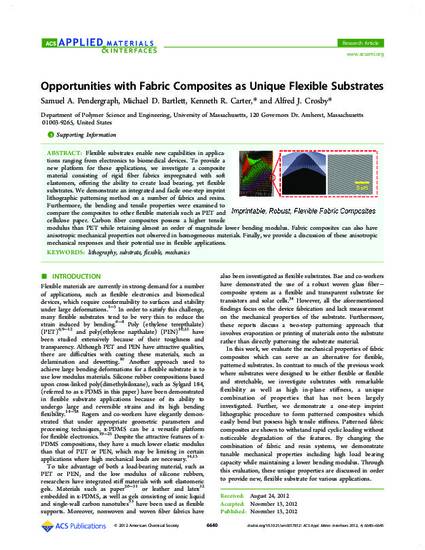
Article
Opportunities with Fabric Composites as Unique Flexible Substrates
ACS Applied Materials & Interfaces
(2012)
Abstract
Flexible substrates enable new capabilities in applications ranging from electronics to biomedical devices. To provide a new platform for these applications, we investigate a composite material consisting of rigid fiber fabrics impregnated with soft elastomers, offering the ability to create load bearing, yet flexible substrates. We demonstrate an integrated and facile one-step imprint lithographic patterning method on a number of fabrics and resins. Furthermore, the bending and tensile properties were examined to compare the composites to other flexible materials such as PET and cellulose paper. Carbon fiber composites possess a higher tensile modulus than PET while retaining almost an order of magnitude lower bending modulus. Fabric composites can also have anisotropic mechanical properties not observed in homogeneous materials. Finally, we provide a discussion of these anisotropic mechanical responses and their potential use in flexible applications.
Disciplines
Publication Date
2012
DOI
10.1021/am3017812
Publisher Statement
Copyright 2012 American Chemical Society. Posted with permission.
Citation Information
Samuel A. Pendergraph, Michael D. Bartlett, Kenneth R. Carter and Alfred J. Crosby. "Opportunities with Fabric Composites as Unique Flexible Substrates" ACS Applied Materials & Interfaces Vol. 4 Iss. 12 (2012) p. 6640 - 6645 Available at: http://works.bepress.com/michael-bartlett/8/
